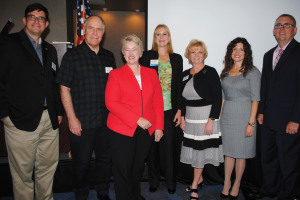 Whether You Want To Get Hot Or Healthy, SUNFIT Is For You!!
Whether You Want To Get Hot Or Healthy, SUNFIT Is For You!!
By Patty Kane
Are you thinking of making 2015 the year to get really aggressive about working out and getting a great tan? Have you, in the past, tried those corporate exercise locations and didn’t really like them? Wouldn’t it be nice to have a small, local place to exercise and tan without all the complications of a large over the top contract and obligation? Well, now there is just that…. SunFit Tanning & Fitness. This is a great place to get personal attention in a friendly home like atmosphere. It’s a one stop shop for getting fit and a glowing tan!
 Owners Matt and Mindy Duhon, have created a great concept to make exercising and tanning a more positive experience Customers have the option of a month to month contract, or if you want, for additional discounts, you can sign up for multiple months.
Owners Matt and Mindy Duhon, have created a great concept to make exercising and tanning a more positive experience Customers have the option of a month to month contract, or if you want, for additional discounts, you can sign up for multiple months.
Tanning packages and workout packages are available or you can combine them and have it all. Matt and Mindy will work with you on a plan that suits your needs and lifestyle.
You can workout at your own pace. There is no pressure to excel beyond what you are comfortable with. Matt and Mindy can assist you with setting goals and have a reward system when you meet that goal. Guidelines are available or you can progress as you like.
 Conventional tanning beds are available or if you prefer spray tanning, SunFit has a top of the line VersaSpa spray tanning machine. VersaSpa is the new state of the art generation of automatic sunless tanning systems designed to give your skin a natural, vibrant tan. You’re going to love this alternative way to get a long lasting glow in just minutes.
Conventional tanning beds are available or if you prefer spray tanning, SunFit has a top of the line VersaSpa spray tanning machine. VersaSpa is the new state of the art generation of automatic sunless tanning systems designed to give your skin a natural, vibrant tan. You’re going to love this alternative way to get a long lasting glow in just minutes.
Everyone knows that regular exercise has many beneficial effects on the body such as improving the function of the musculoskeletal system, the cardiovascular system, respiratory system, metabolism and the brain. Engaging in regular exercise is one of the best things you can do to prevent heart disease so during the month of February, in honor of the Go Red for Women Luncheon, Matt and Mindy will donate a portion of the cost of each new membership at SunFit to the American Heart Association. Not only will you get fit but you will be helping find a cure for heart disease in women.
 SunFit is a great example of small business success in the Bay Area. As Matt says, “It’s not work when you have a passion for doing something you love and it’s amazing what you can accomplish if you try.” Matt and Mindy started out buying a tanning salon which was a distressed business and turned it into a success. They recently decided to renovate the original tanning salon space, and turn it into what is now SunFit Tanning & Fitness. Matt and Mindy, along with their manager and close friend Jacqueline Gross, worked as a team updating, renovating, painting and designing the new décor. The result is an example of entrepreneurship at its best.
SunFit is a great example of small business success in the Bay Area. As Matt says, “It’s not work when you have a passion for doing something you love and it’s amazing what you can accomplish if you try.” Matt and Mindy started out buying a tanning salon which was a distressed business and turned it into a success. They recently decided to renovate the original tanning salon space, and turn it into what is now SunFit Tanning & Fitness. Matt and Mindy, along with their manager and close friend Jacqueline Gross, worked as a team updating, renovating, painting and designing the new décor. The result is an example of entrepreneurship at its best.
SunFit Tanning & Fitness is located at 607 Kirby Road in Seabrook. For more information call 832-864-3459, visit www.SunFitSeabrook.com. or come by. Matt, Mindy and Jacqueline will be glad to show you the facility and answer any questions you may have.













